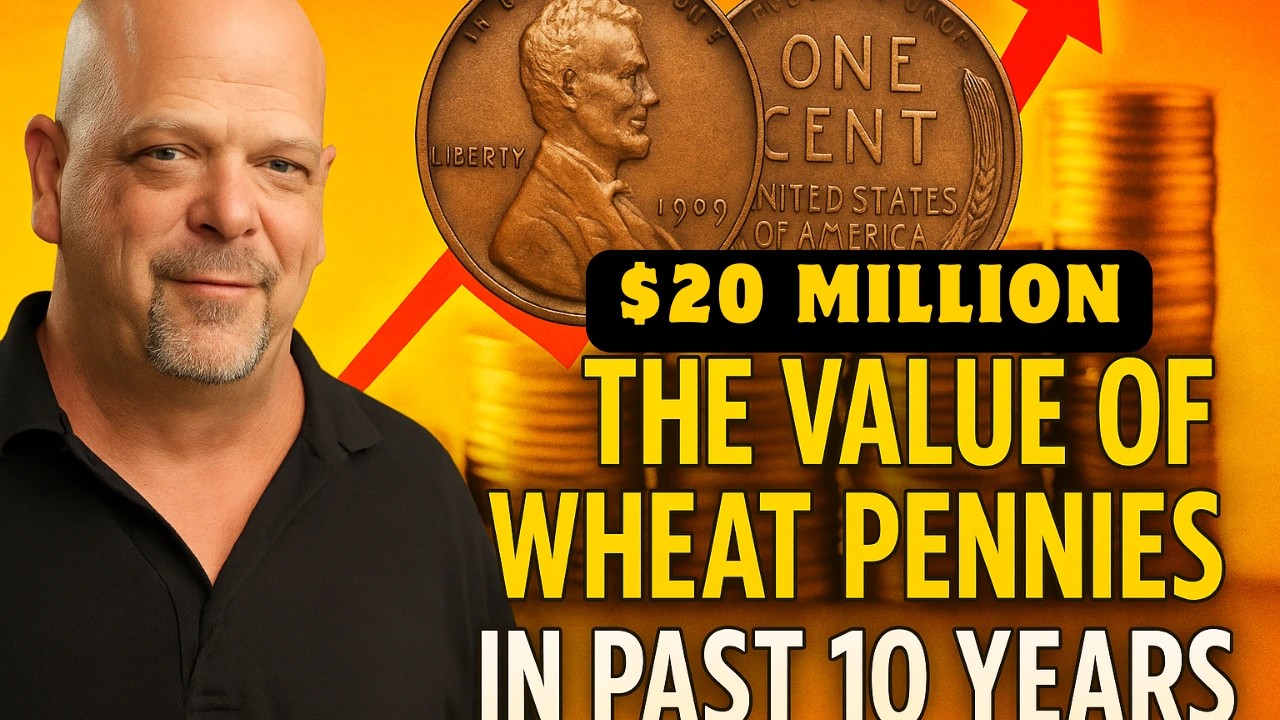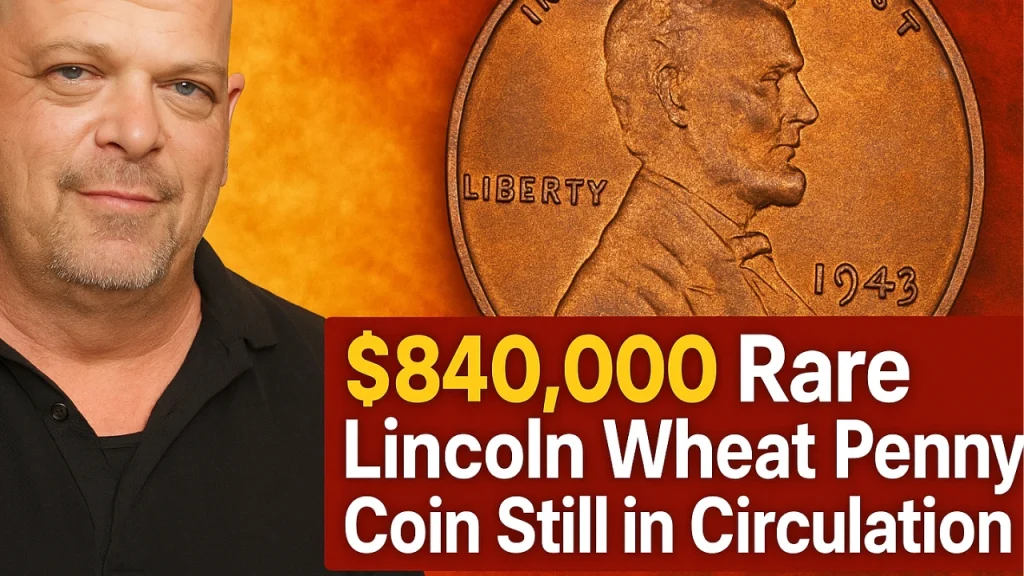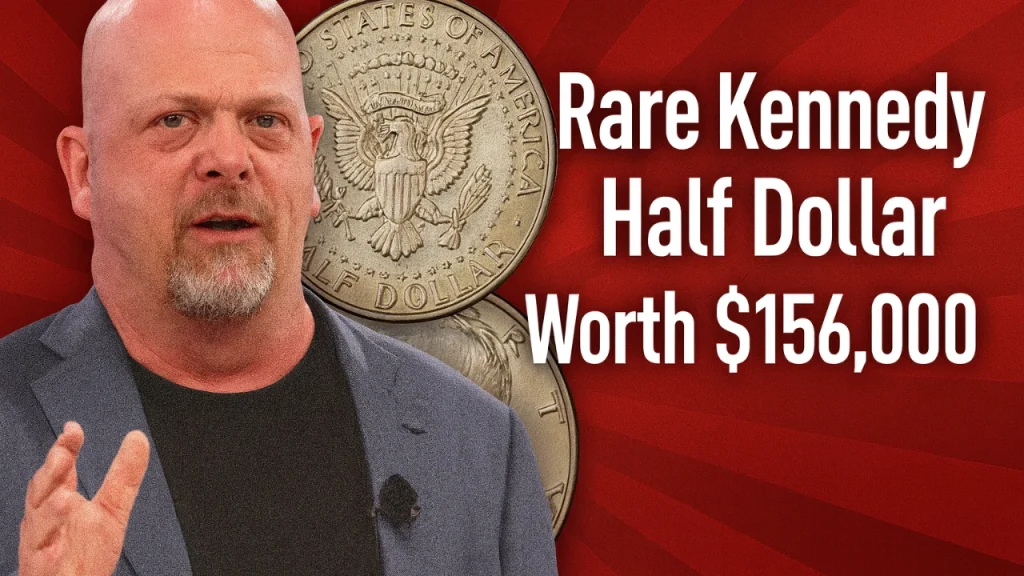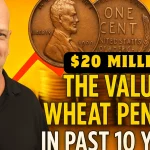For coin collectors and history lovers alike, the humble Wheat penny remains a timeless treasure of American numismatics. Minted from 1909 to 1958, these small copper coins have not only captured the heart of collectors but have also gained significant monetary value over the decades. In the past 10 years, the market for Wheat pennies has evolved dramatically — from modest prices for common varieties to record-breaking sales for rare mint errors and high-grade coins.
This dream guide takes you through the fascinating journey of Wheat penny values over the last decade, exploring historical trends, collector insights, and the reasons why these coins continue to inspire dreams of fortune and discovery.
Origins of the Wheat Penny
The Lincoln Wheat cent was introduced in 1909, marking the 100th anniversary of Abraham Lincoln’s birth. Designed by Victor David Brenner, it was the first U.S. coin to feature a real person’s portrait — a bold move for the time.
The reverse design featured two stalks of wheat — symbolizing prosperity and national growth — hence the nickname “Wheat penny.” The coin composition initially included 95% copper and 5% tin and zinc, giving it a distinct reddish-brown hue prized by collectors today.
Why Wheat Pennies Became Collector’s Gold
Several factors have made Wheat pennies an irresistible collectible:
-
Historical significance – A representation of early 20th-century America.
-
Design artistry – Brenner’s detailed depiction of Lincoln remains iconic.
-
Rarity and Mint Errors – Limited editions, wartime variations, and production mistakes have made some pennies worth thousands or even millions.
-
Affordable entry point – Many Wheat pennies are inexpensive, making them perfect for beginner collectors.
The Market Evolution (2015–2025): A Decade of Change
According to Masslive, Over the past ten years, the coin-collecting market has seen unprecedented growth due to online auctions, digital trading platforms, and the surge in interest during the pandemic years. Wheat pennies, in particular, experienced spikes in both demand and price appreciation.
Below is a timeline overview of Wheat penny value trends from 2015 to 2025:
| Year | Market Highlights | Average Price Growth | Notable Sales |
|---|---|---|---|
| 2015 | Stable interest, strong demand for 1909-S VDB | +3% | 1909-S VDB sold for $1,200 (MS65) |
| 2016 | Rise in copper metal value boosted attention | +4% | 1914-D reached $3,500 (MS64) |
| 2017 | New collectors from online platforms | +7% | 1955 Double Die sold for $18,000 |
| 2018 | Market correction, steady interest | +2% | 1922 No D Cent auctioned for $12,000 |
| 2019 | Social media coin finds trend | +6% | 1943 Bronze Penny discovered in MA |
| 2020 | Pandemic revival in collectibles | +12% | 1909-S VDB hit $2,000 (MS65) |
| 2021 | Record auction sales surge | +15% | 1943 Copper sold for $1.7 million |
| 2022 | Inflation hedge effect on rare coins | +10% | 1958 Double Die set new record |
| 2023 | Global collectibles boom | +9% | 1914-D touched $6,000 (MS66) |
| 2024 | Stabilization with online grading tools | +5% | 1909-S VDB stable at $1,800 |
| 2025 | Growing international interest | +8% | Discovery of new 1943 error coin |
The Stars of the Wheat Penny Series
The 1909-S VDB Penny
The 1909-S VDB is the cornerstone of Wheat penny collecting. Struck in San Francisco, only 484,000 were minted before the U.S. Mint removed Brenner’s initials (V.D.B.) due to controversy.
-
Mintage: 484,000
-
Current Market Value (2025): $1,200–$3,500 depending on grade
-
Rarity Level: High
The 1914-D Penny
The 1914-D from the Denver Mint is another collector favorite. With low mintage and strong demand, its value has consistently risen in the past decade.
-
Mintage: 1,193,000
-
Value Range: $350–$5,500 (Fine to MS65)
-
Trend (2015–2025): +80% appreciation
The 1922 “No D” Penny
A famous minting anomaly from Denver, the 1922 No D Wheat cent lacks the mint mark due to die polishing errors. It remains one of the most famous U.S. coin errors.
-
Mintage Estimate: Unknown (low thousands)
-
Current Value: $1,000–$20,000 depending on grade and clarity
-
Collector Demand: Extremely high
The 1943 Copper Penny
The holy grail of all Wheat pennies, the 1943 Copper Cent, was accidentally minted on leftover bronze planchets instead of steel during WWII. Fewer than 20 are believed to exist.
-
Mintage: ~20 known
-
Current Value (2025): $700,000–$1.9 million
-
Auction Record: $1.7 million in 2021
The 1955 Double Die Penny
One of the most visually dramatic and easily recognizable errors, the 1955 Double Die Obverse displays bold doubling of the date and inscriptions.
-
Mintage Estimate: 20,000–24,000
-
Current Value: $1,000–$25,000 (depending on clarity)
-
Popularity Level: Very High among new collectors
Rare Variants That Shaped Collector Dreams
Aside from the major stars, several underrated varieties have gained attention in the past decade.
| Year | Variant | Description | Average 2025 Value | Trend |
|---|---|---|---|---|
| 1917 | Double Die | Doubling on “IN GOD WE TRUST” | $800–$2,500 | Rising |
| 1931-S | Low Mintage | Only 866,000 struck | $150–$1,000 | Stable |
| 1944 Steel | Wrong planchet | Rare post-war steel cent | $20,000+ | Increasing |
| 1958 | Double Die Obverse | Extreme doubling, very rare | $75,000–$200,000 | Soaring |
| 1946 | Repunched Mint Mark | Subtle variation, collectible | $50–$250 | Steady |
How Value Is Determined
The value of Wheat pennies in 2025 is influenced by several core factors:
Condition (Grade):
The Sheldon grading scale from 1 to 70 is used. Mint State (MS60+) coins fetch the highest prices.
Rarity:
Low mintage or error coins rise exponentially in value as fewer survive over time.
Metal Composition:
Copper prices have fluctuated, indirectly influencing collector pricing, especially for heavily circulated coins.
Eye Appeal:
Coins with strong luster, minimal wear, and sharp details are prized even within the same grade.
Historical Importance:
Coins tied to major events (WWI, WWII, Great Depression) hold sentimental and monetary appeal.
Investment Performance: Wheat Pennies vs. Precious Metals
The last decade has proven that coins, especially Wheat pennies, can perform as strong alternative investments.
| Asset Type | 10-Year Growth (2015–2025) | Average Annual Return | Volatility |
|---|---|---|---|
| Gold | +45% | 4.5% | Medium |
| Silver | +30% | 3% | High |
| Wheat Pennies (Top 10%) | +150% | 15% | Medium |
| Rare Error Pennies | +400% | 40% | High but profitable |
Collectors and investors who focused on authenticated, high-grade coins saw consistent returns outperforming traditional precious metals.
Modern Grading and Authentication
With the advent of technology, authentication has become more reliable. Organizations like PCGS (Professional Coin Grading Service) and NGC (Numismatic Guaranty Company) have standardized grading, adding barcodes and digital verification.
-
Smartphone apps now allow instant verification of certification numbers.
-
AI coin scanners (introduced in 2023) detect forgeries by microscopic detail comparison.
-
Digital wallets for collectibles track real-time market values.
This digital shift has increased transparency and boosted collector confidence globally.
Collecting Trends of the 2020s
The 2020s brought a fresh wave of enthusiasm for coin collecting:
-
YouTube and TikTok “coin hunting” videos went viral, inspiring millions to search spare change.
-
Online auctions and marketplaces (eBay, Heritage, GreatCollections) made trading easier.
-
Younger demographics entered numismatics as both hobby and investment.
-
Hybrid collections emerged — combining digital NFTs with physical coin ownership.
Interestingly, while some investors treat Wheat pennies as commodities, traditional collectors still emphasize the historical narrative behind each piece.
Expert Insight: Why the Market Is Still Rising
Experts attribute the sustained rise in Wheat penny values to several interlinked factors:
-
Limited Supply: Most rare Wheat cents have been hoarded by collectors for decades.
-
Generational Shift: Baby boomers passing collections to younger heirs creates market churn.
-
Media Coverage: Every record-breaking sale rekindles public fascination.
-
Cultural Nostalgia: Coins evoke simpler times — linking family, patriotism, and history.
In 2025, coin shows and conventions in the U.S. report 20–25% higher attendance than five years ago, reflecting renewed enthusiasm.
Dream Finds: Real-Life Discoveries
Throughout the past decade, stories of ordinary people finding rare Wheat pennies have fueled public excitement:
-
A teenager in Pennsylvania found a 1943 Bronze Penny in a relative’s coin jar — later valued at over $1 million.
-
A retired teacher uncovered a 1955 Double Die Penny while sorting through old jars, selling it for $16,000 in 2020.
-
A flea market enthusiast purchased a 1914-D penny for $5 that graded at MS63, later fetching $3,200.
These “dream finds” remind collectors that treasures may still lie hidden in plain sight.
Preservation Tips for Collectors
Maintaining coin quality is crucial to preserving or increasing value. Experts recommend:
-
Avoid cleaning coins – Cleaning can damage patina and reduce grade.
-
Use acid-free holders – To prevent corrosion or discoloration.
-
Store in climate-controlled spaces – Especially for copper coins sensitive to humidity.
-
Label and document collections – Aids provenance and future resale.
Proper care ensures coins appreciate in value while keeping their historical charm intact.
The Future Outlook for Wheat Pennies (2026 and Beyond)
Analysts project that rare coin values will continue rising, particularly for coins with authenticated provenance and pristine condition. Wheat pennies will remain a cornerstone for U.S. numismatics due to their cultural and historical weight.
Predictions for 2026–2030:
-
Growing demand from Asian and European collectors.
-
Digital tokenization of certified coins for online trading.
-
Discovery of additional error varieties through AI imaging tools.
-
Continued increase in value of the 1943 Copper and 1958 Double Die pennies.
Experts expect an average appreciation of 8–12% annually across rare Wheat penny types through 2030.
Why the Wheat Penny Will Always Matter
The Wheat penny is far more than a small copper coin; it’s a story of resilience, design, and national identity. From the Great Depression to the digital age, it has outlasted political and economic cycles, becoming a symbol of American heritage.
For some, it’s a family heirloom. For others, a financial investment. But for all, the Wheat penny remains a piece of art — a bridge between the past and the present.
Conclusion
Over the past 10 years, the value of Wheat pennies has proven that numismatics is not just a nostalgic pastime but a thriving market of passion and potential. From the million-dollar 1943 Copper Cent to the sentimental 1909-S VDB, these coins tell stories that blend history, craftsmanship, and human curiosity.
Whether you are a seasoned collector or a curious beginner, the journey of the Wheat penny is a dream guide to understanding how a single cent can hold immeasurable worth — not just in dollars, but in legacy.












Leave a Comment